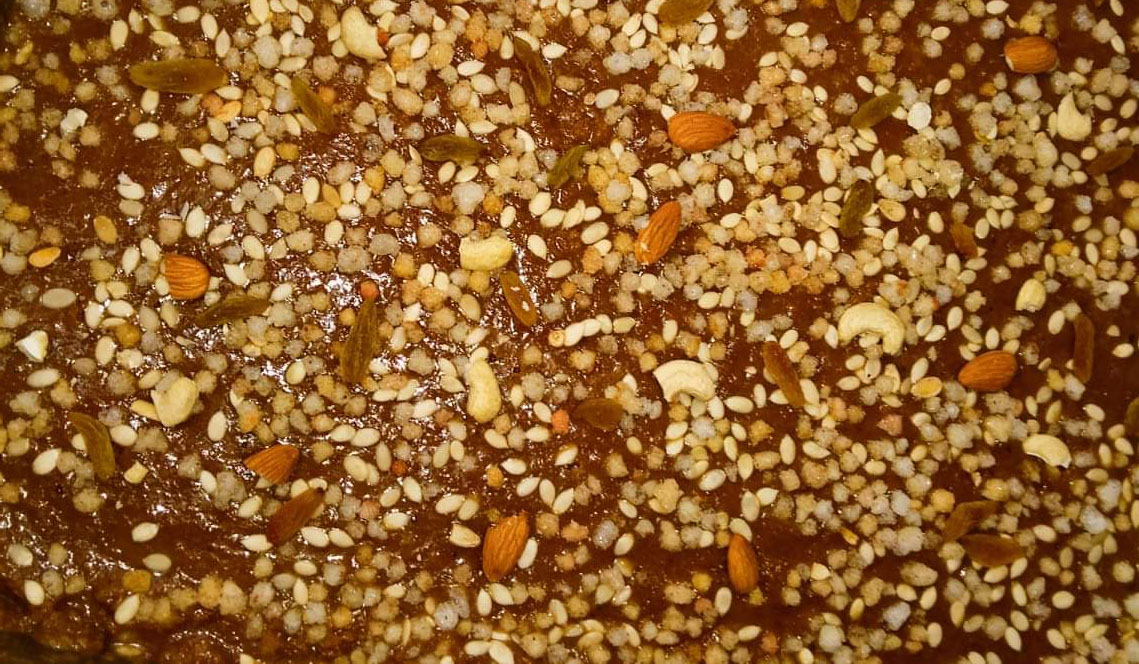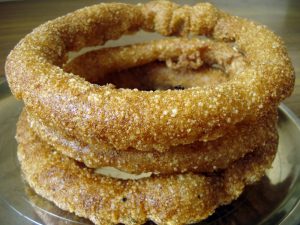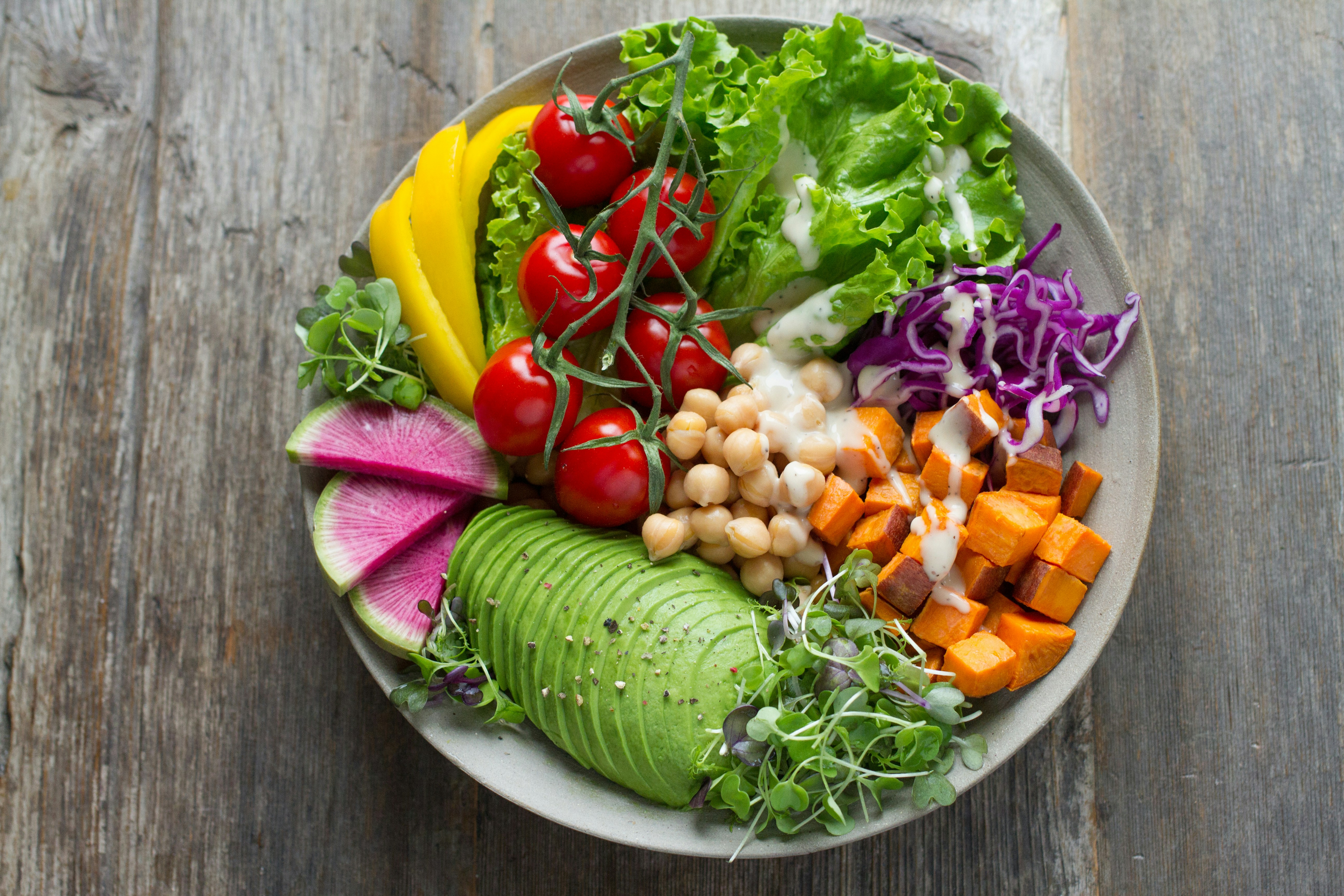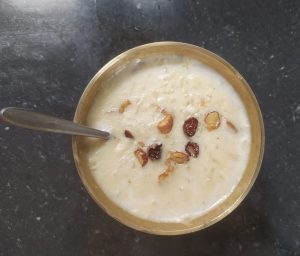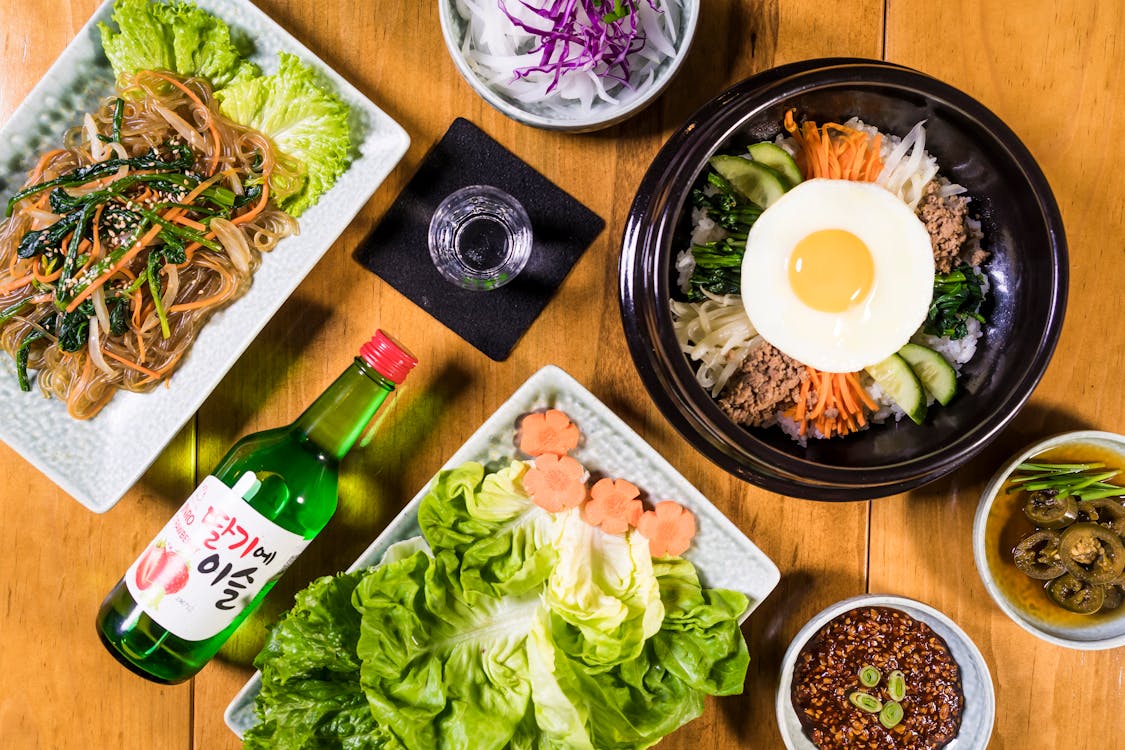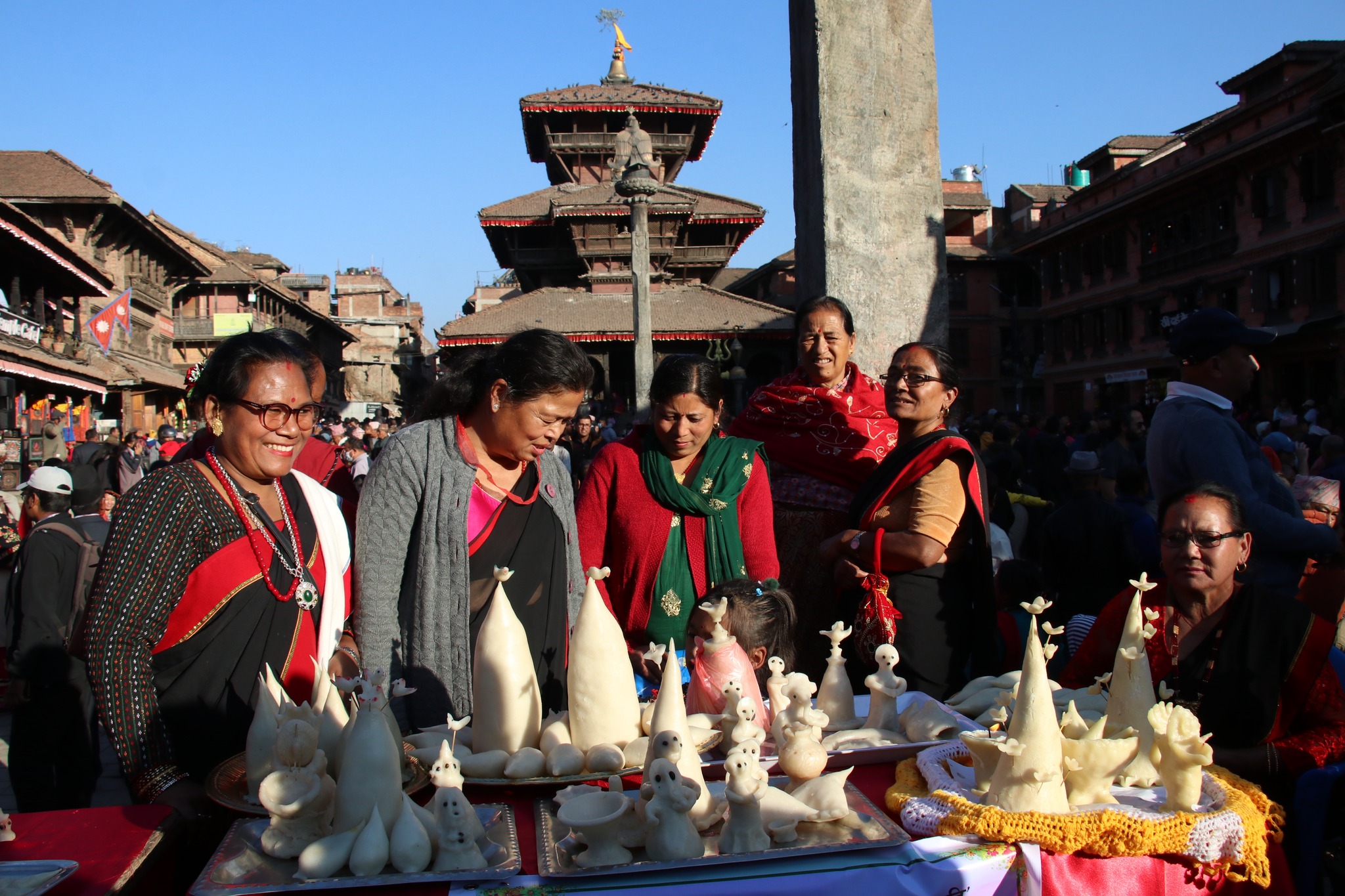Suresh Gamal has been making sweets since a young age. After working as an apprentice in another big shop in Maru of Kathmandu, he opened up his own shop, Shree Ganesh Mithai Pasal at Dhalko, some eight years ago and today manages it with his wife, Reena. Over these years, he has learned and made a lot of sweets, including breakfast snacks, barfi, lalmohan, rasbari, lakhmari, gudpak and pustakari.
In his experience, gudpak and pustakari are popular among his customers and hence thinks they hold some importance in the city’s cultural life. But, even after his years of making sweets, he is unaware of how or when gudpak and pustakari came into existence.
For Mim Das Balami also, the story is not so different. He learned to make all kinds of sweets some 15 years ago and for the past one and a half years, has owned and managed his sweet shop, Best Mithai Sweet Shop, in Nardevi. He has also been making gudpak as he receives orders for it, for many years now. Yet, he admits he has never questioned nor wondered how and where the sweet was first made.
The history of unknown decades
It is not yet proven when and how the first gudpak was made. Yet some speculations have been made. Food expert Sharada Jnawali, who introduces herself as a healthy food promoter, says it was probably in a sweet shop where the makers used the leftover solid sweets and mixed them into one to make gudpak.
On the other hand, the owner of Gundpak Bhandar at New Road, Manil Ratna Maskey, has been known to claim that it was his late grandfather, Panna Lal Maskey, who was the first person to introduce gudpak in the city in his shop in Ason, in 1933. It is also claimed that it was him who coined the word “gudpak” first, where “gud” is the sweet, edible gum or jaggery and “pak(h)” is a portion of the cooked dish.
Though not dated, gudpak along with pustakari, another sweet item made with similar ingredients, has been locally manufactured and commercially sold for several decades now.
The making of gudpak and pustakari
There is no specific recipe and process to make these sweets. There can be variations depending on the maker and their choice of composition. “The quality and ingredients used do make a difference in the taste, consistency, colour and function. People prefer the soft, gooey, moist, creamy-textured and sweet gudpak to eat. It is also a sign that it is fresh and ready to eat,” adds Jnawali.
Another factor that attracts people is its colour, popularly brown. Such brownness can be controlled by limiting heat exposure and duration and moisture content. In milk or milk products, there are active sulphydryl groups that act as natural inhibitors that give off the colours.
The earliest gudpak were made using cooking fuels such as wood, in a deeper pan, where the maker mixed milk, khuwa, ghee and the dried fruits to create gudpak. Even today, the major ingredients are the same, though the types of stoves used have changed from kerosene stoves to gas stoves.
The sweet is made with khuwa or khoa as a base. Khuwa is made with the milk of a cow or buffalo (even goat or sheep). Locally made khuwa from Banepa or Panauti, towns some 30 km east of Kathmandu, is rather famous to eat separately and for gudpak. Other minor ingredients include dried fruits or nuts such as almonds, cashews, coconuts, pistachio, dates, fox nuts (makhana) and decorated with watermelon seeds and dry grapes (raisins). It can also be mixed with spices like cinnamon, cloves, cardamoms for taste.
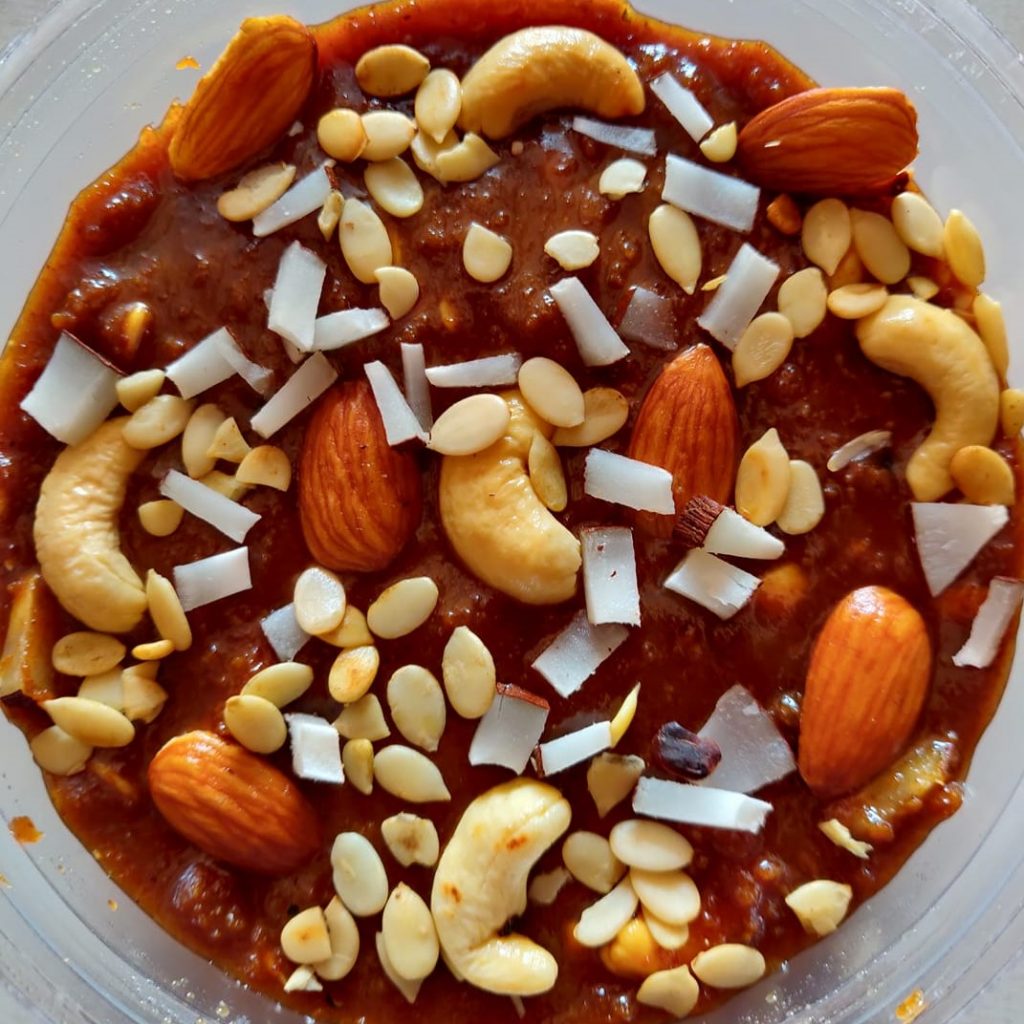
The nutrient for new mothers
Another major type of gudpak is the “sutkeri gudpak”, specially prepared for new mothers. It is also said Panna Lal Maskey was inspired by his maternal uncle, a baidya (ayurvedic doctor) by profession, to prepare the medicinal gudpak for lactating women.
The sutkeri gudpak has all ingredients of gudpak and additionally has battisa powder (a mixture of 32 medicinal herbs) and jesthalangwadi (a mixture of 14 medicinal herbs). Sutkeri masala is also called mishri pak(h).
Dr Aruna Uprety, a public health expert, says “It is specially made for lactating women to help them in the healing of post-delivery wounds, white discharge, and tightening of the womb. It gives immunity, heat and helps revive energy to fight against tiredness and fatigue.”
It is generally given to women 45 days after giving birth. Sutkeri gudpak is almost a customary gift even today for people who go visit the new mothers.
However, its consumption is not restricted to women. “Plain gudpak is also consumed by people who work in the fields, once done. Medicinal gudpak, with sauff (fennel seeds), is also beneficial for male reproductive organs, and the prostate,” adds Jnawali.
The food for all
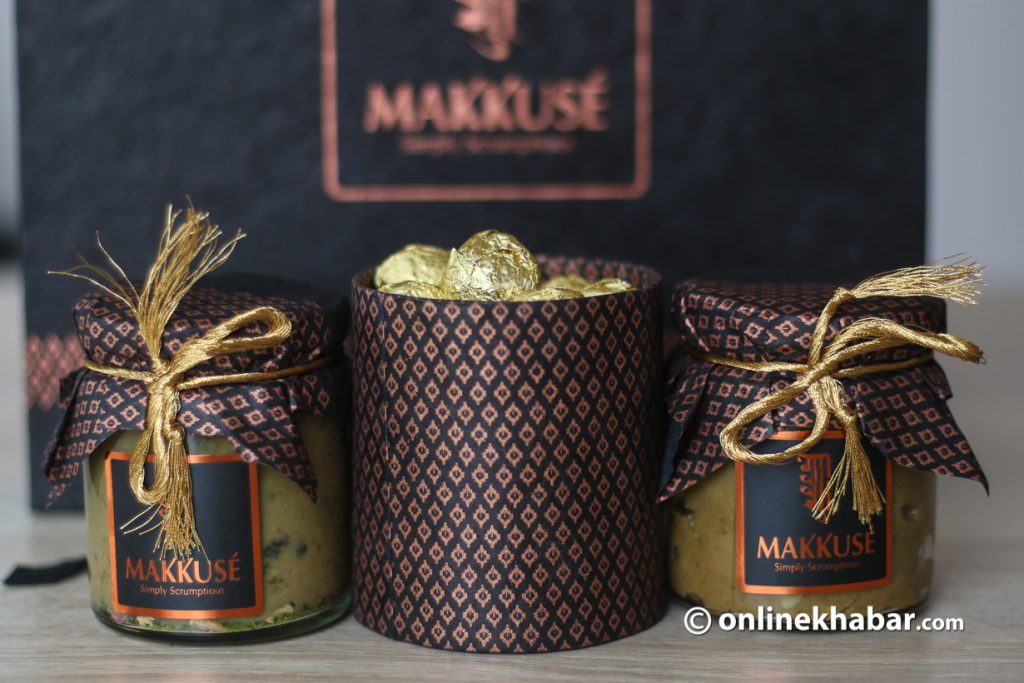
Gudpak has been a food for all. It is still highly common in the Newa community, both in terms of production and consumption. Gudpak has to be stored in a cool place to increase shelf life. Ideally, its shelf life in the summer is one week whereas it is two weeks in the winter.
For both, Suresh Gamal and Min Das Balami, the business has been stable. People order sutkeri gudpak as per need whereas the demands go up during festivals as it is used as a gift.
It is even popular as a souvenir for those travelling abroad, and for other celebrations and on birthdays. “In fact, I push forward for the use of gudpak as a cake instead of the market cake. It is a much healthier option to eat.” Dr Uprety stresses.
A survey was conducted in 2010 within Kathmandu, Bhaktapur, Lalitpur and Kavre. It found 70.6 per cent of those who consumed gudpak were from the Newa community. It also quoted that approximately 579.1 metric tonnes of gudpak were produced and sold about 550.4 metric tonnes annually, worth Rs 192.5 million.
The price of the gudpak depends on the quality of khuwa used. A good quality gudpak sells at Rs 800/kg. But, the total production of gudpak today is not yet ascertained.
These days, gudpak and pustakari are being commercialised and their consumption seems to have increased. From the time where sweetmakers were made and sold in aluminium trays to fancy proper branding and marketing of today, the food’s essence has remained the same.
Caveats
Though it is sweet to eat, it is recommended that one eat only 10 grams, equivalent to two tablespoons, a day and between two meals. Dr Uprety recommends people practise control and not overeat, though it is tempting. “It is liked and beneficial for all ages. It is oily and fatty in nature, which is essential for the taste. But, that is why it should be eaten in proper dosage only. Else, it will cause high blood pressure, sugar levels and even cause obesity,” she says.
Jnawali adds, “One has to be careful about their food allergies too. Some live with lactose intolerance, and peanut allergies so the milk, ghee or khuwa and the dried fruits used in the gudpak. Others who have cholesterol, sugar or diabetes also need to be careful.”



